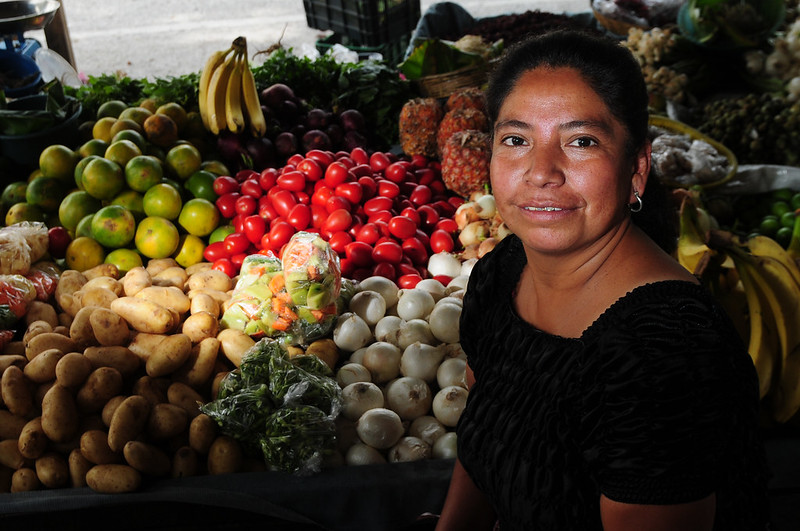Evaluating an Information Campaign Connecting Women Food Producers to Schools in Guatemala

In collaboration with IPA, researchers conducted a randomized evaluation in Guatemala that found that a video and text message campaign for women agricultural producers about the government’s School Feeding Program increased knowledge of the program and better prices and sales of the products it demanded. However, the campaign had no impact on getting women to participate in the School Feeding Program itself, suggesting better alignment of the program with local market conditions is needed.
Women account for approximately half of the world’s global food production, yet they continue to encounter barriers to their livelihoods, such as limited market access and information compared to men.1 In Guatemala, the government’s School Feeding Program enables local farmers to register as food providers for public schools, creating vital linkages. However, women farmers face challenges like limited awareness of the program, insufficient incentives to participate, and limited production capacity. Digital technologies may increase their awareness of and participation in this program.
In collaboration with IPA, researchers conducted a randomized evaluation to measure the impact of a video and text message campaign on women farmers’ participation in the School Feeding Program and their economic outcomes. A total of 272 villages (881 women farmers) were randomly assigned to the following groups:
- Video and text messages: Women in this group watched a video with information on the features of the School Feeding Program, ways to sell to schools, food quality standards and practices, and the School Feeding Program under COVID-19. They also received six personalized text messages with reminders on accessing the School Feeding Program, schools’ demand for products, prices paid by the program, and contact information for farmers who were providers to the program.
- Comparison group: Women in this group watched an unrelated video and received text messages about COVID-19 prevention measures. Following the evaluation, they received the same information on the School Feeding Program as the above group.
The video and text messages significantly increased women farmers’ knowledge of the School Feeding Program as a business opportunity. For instance, they were 19.9 percent more likely to know that the program buys from local farmers and 21 percent more likely to know that they could register as food providers. They were also more likely to know the basic features of the program. In addition, the campaign increased women’s decisions to sell animal products demanded by the program by 20 percent, and it increased the price received by women on any product by 31.5 percent. The campaign had no impact on women’s participation in the School Feeding Program, as it did not address other structural challenges that women face to joining the program such as product mismatches, production capacity, and institutional trust.
Sources
1. USDA Press Release, “U.S. Paves Way for UN to Declare 2026 as International Year of the Woman Farmer,” US Department of Agriculture, May 2, 2024.
Funding Partner












